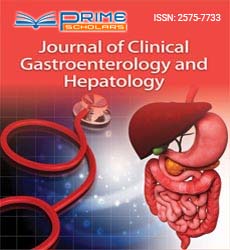Commentary - (2022) Volume 6, Issue 3
Colonoscopy and its Advantages and Disadvantages
Department of Surgical Sciences, Uppsala University, Sweden
*Correspondence:
Joseph Brenner, Department of Surgical Sciences, Uppsala University,
Sweden,
Email:
Received: 01-Mar-2022, Manuscript No. IPJCGH-22-13183;
Editor assigned: 03-Mar-2022, Pre QC No. IPJCGH-22-13183 (PQ);
Reviewed: 17-Mar-2022, QC No. IPJCGH-22-13183;
Revised: 22-Mar-2022, Manuscript No. IPJCGH-22-13183 (R);
Published:
29-Mar-2022, DOI: 10.36648/2575-7733.6.3.11
Description
A colonoscopy is a procedure that detects changes or anomalies
in the rectum and digestive organs. A long, adjustable
cylinder colonoscope is inserted into the rectum during a colonoscopy.
The specialist can see inside the colon thanks to a
small camcorder at the cylinder’s tip. Polyps or other types of
atypical tissue can be removed through the degree during a
colonoscopy if necessary. Tissue tests can also be performed
during a colonoscopy. A colonoscopy is a short-term procedure
that uses a colonoscope to examine the inside of your digestive
organ. This versatile equipment is quite long and includes
a camera as well as the ability to remove tissue. A colonoscopy
is frequently performed to evaluate gastrointestinal adverse
effects such as death, stomach pain, or changes in internal proclivities.
A colonoscopy may be recommended by a specialist to investigate
gastrointestinal symptoms and adverse effects. A colonoscopy
can help your primary care physician figure out what’s
causing stomach pain, rectal bleeding, persistent obstruction,
continuous bowel looseness, and other digestive problems.
Check for cancerous development in the colon. If you’re over
50 and at a normal risk of colon disease and have no additional
colon malignant growth risk factors than age, your PCP
may recommend a colonoscopy on a regular basis or more frequently
to check for colon illness. Colonoscopy is one option
for detecting cancerous development in the colon. Look for any
more polyps. If you’ve previously had polyps, your primary care
physician may recommend a follow-up colonoscopy to look for
and remove any remaining polyps. This is done to reduce your
chances of developing colon cancer.
Endoscopy and colonoscopy are nonsurgical procedures that
involve using an adjustable cylinder with a light and camera to
examine parts of the intestine. A colonoscopy is an endoscopic
procedure. The term “endoscopy” is usually used to refer to an upper endoscopy, which is a procedure in which an endoscope
is sent via the mouth and throat into the throat to allow
a specialist to visualise the throat, stomach, and upper portion
of the small intestine. A small ultrasound device is placed on
the endoscope’s tip during an ultrasonic endoscopy, allowing
doctors to obtain more precise and certain images than those
obtained with external ultrasounds.
The procedure is called as a sigmoidoscopy or colonoscopy,
depending on how much of the colon is examined, when an
endoscope is sent via the rectum into the internal organ. Unless
there are complications, more examinations with biopsies,
or polyp evacuation is required, an endoscopy or colonoscopy
should be completed in 10-30 minutes. A colonoscopy is a
procedure that involves removing the colon. Most colonoscopy
plans include drinking a lot of purifying MiraLAX, as well as diuretics,
stool purges, and possibly a few days of a decent fluid
eating pattern prior to the procedure.
In most cases, the examining doctor will inform the patient
about the experimental results or potential discoveries before
releasing them from the recuperation area. The results of biopsies
or cytology usually take 72-96 hours, and the specialist
may only provide the patient a potential finding before the
conclusive one, following a careful examination of the biopsies.
The discoveries can be discussed with the patient prior to the
patient’s departure from the coloscopic facility. Nonetheless, a
definitive decision may need to wait for an infinitesimal inspection
of biopsy samples, which usually takes a couple of days.
Acknowledgement
None.
Conflict of Interest
Authors declare no conflict of interest.
Citation: Brenner J (2022) Colonoscopy and its Advantages and Disadvantages. J Clin Gastroenterol Hepatol. 6:11.
Copyright: © Brenner J. This is an open-access article distributed under the terms of the Creative Commons Attribution License, which permits unrestricted use, distribution, and reproduction in any medium, provided the original author and source are credited.

